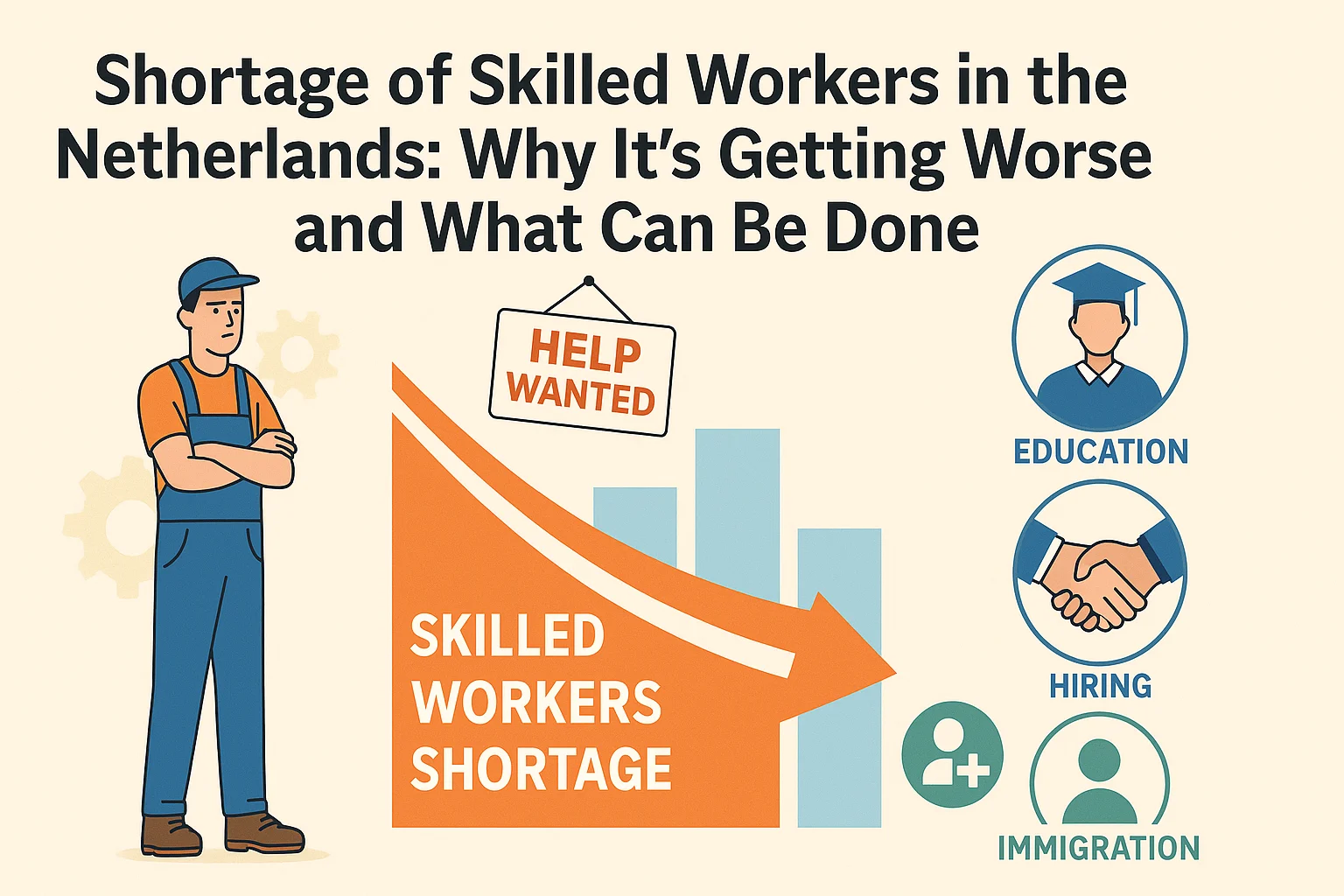Shortage of Skilled Workers in the Netherlands: Why It’s Getting Worse and What Can Be Done
The Netherlands is facing a growing challenge: a persistent and widening shortage of skilled workers. From healthcare and construction to IT and education, sectors across the board are struggling to fill roles. As the economy continues to grow and the population ages, the gap between demand and supply is reaching critical levels.
A Crisis in the Making
This isn’t a new issue, but it’s becoming more urgent. According to recent labor market data, the number of unfilled vacancies in skilled professions has reached record highs. Technicians, nurses, teachers, IT specialists, and electricians are in particularly short supply. Some companies report waiting months to fill a single role—if they can fill it at all.
The causes are complex. An aging population means more people are retiring, while fewer young people are entering vocational or technical education. The demand for digital and green skills is rising fast, but training programs and career paths haven’t kept pace. As a result, the Dutch economy is running into a productivity bottleneck.
Sectors Hit the Hardest
Healthcare is at the top of the list. Hospitals and care centers are desperate for qualified nurses and caretakers, especially as the aging population drives up demand for long-term care. In education, schools struggle to find and keep teachers, especially in STEM subjects. And in the construction industry, climate policies are boosting demand for skilled workers in energy-efficient building and renovation—but there just aren’t enough hands to do the work.
The ICT sector is also sounding the alarm. With cybersecurity threats rising and nearly every business going digital, companies are in fierce competition for developers, analysts, and engineers. Without these workers, innovation and digital growth will slow down.
What Are the Consequences?
If this trend continues, the consequences will be serious. Economic growth could slow, waiting times in hospitals and schools may rise, and companies could lose their competitive edge internationally. Small businesses, in particular, may struggle to keep up as they often can’t match the salaries or perks offered by larger firms.
In the long term, this labor shortage could also increase inequality. Workers with in-demand skills will command higher wages, while others may find themselves stuck in low-paying or insecure jobs unless they can reskill.
Solutions on the Horizon
Solving the skills shortage will require action on multiple fronts. First, education must be more closely aligned with labor market needs. That means investing in vocational training, apprenticeships, and tech-focused curricula. Career guidance for students must also be improved to make trades and technical roles more attractive.
Second, lifelong learning must become the norm. Workers in shrinking sectors need support to retrain and transition into growing industries. Government programs and employer-led training initiatives will be key.
Third, employers need to rethink hiring. That includes being more inclusive—recruiting older workers, people with disabilities, and individuals from diverse backgrounds. Offering flexible work, development opportunities, and better conditions can make a major difference in retention.
And finally, immigration policy will play a role. International talent, especially in tech and healthcare, will be crucial to filling the gaps in the short term. But that must go hand-in-hand with integration efforts to ensure new arrivals can thrive in the Dutch workforce.
A Call for Collaboration
This isn’t a problem one sector or government department can fix alone. It will take cooperation between educators, employers, unions, and policymakers to make real progress.
If the Netherlands can rise to the challenge, the reward will be a more resilient, inclusive, and future-ready labor market. If not, the skills gap could become a skills crisis—and the time to act is now.


